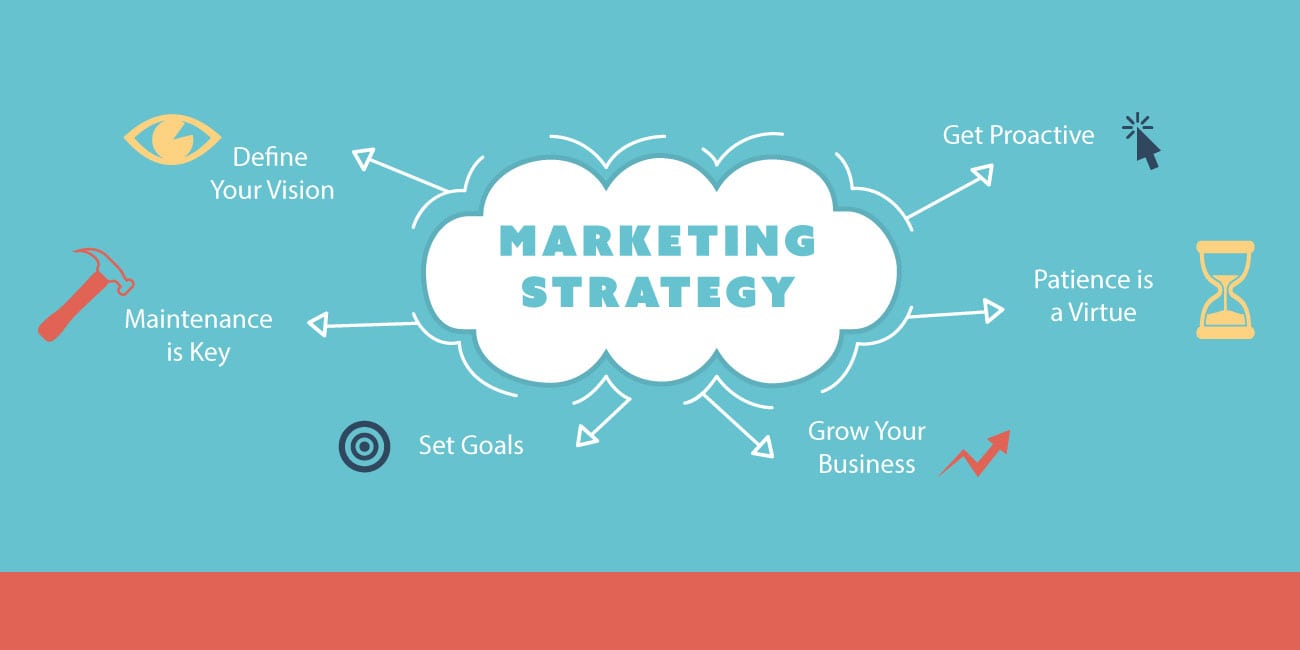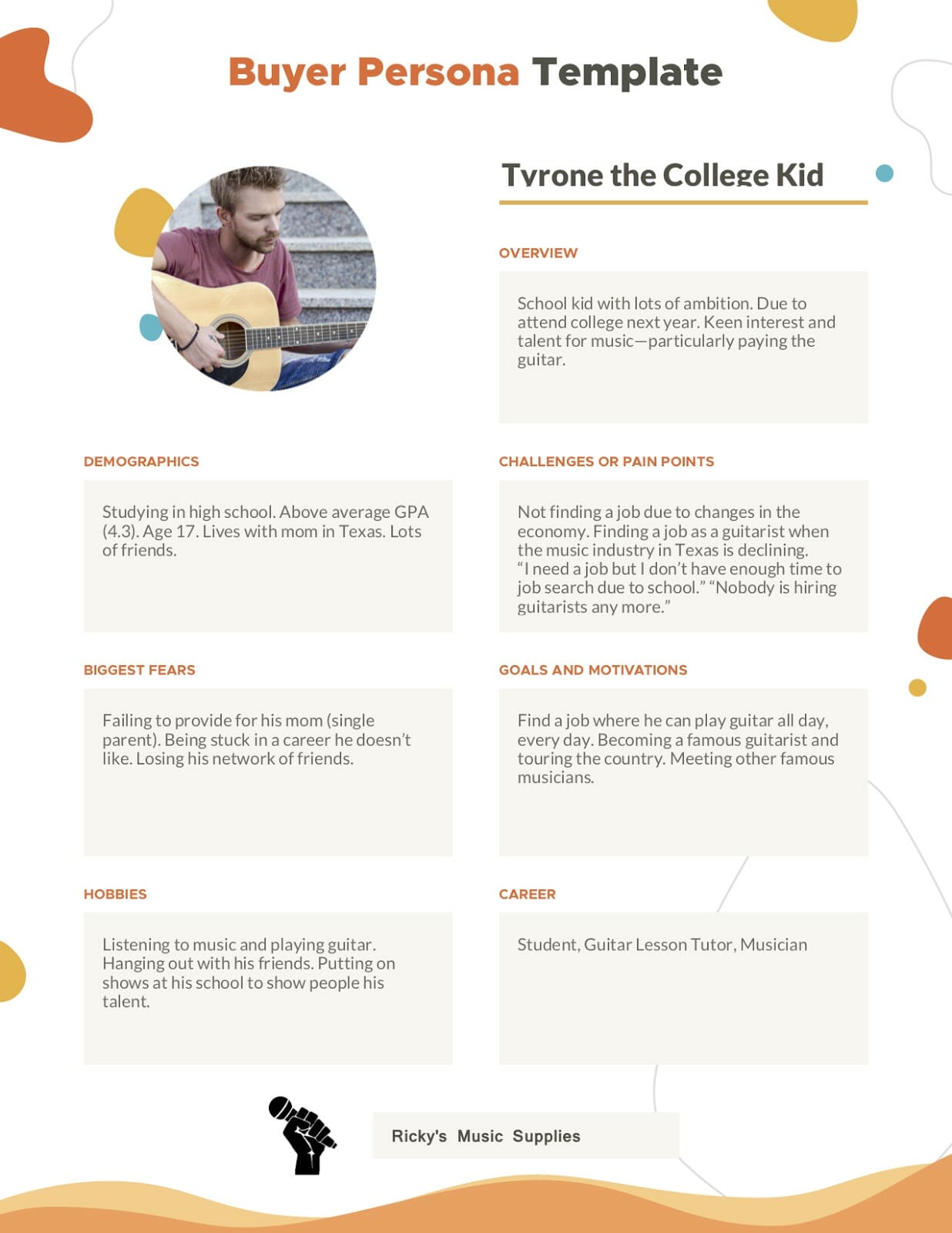We hope you enjoy reading this blog post
If you need help with website or marketing, book a call with our team for a free 360° overview and actionable recommendations report. Book a call

If you need help with website or marketing, book a call with our team for a free 360° overview and actionable recommendations report. Book a call

No matter what industry you’re in, you have to market yourself in some way. It’s just a must if you’re to bring in new clients or customers on regular basis. It’s understandable that the idea of coming up with a strategy on your own might be overwhelming. Depending on the size of your company, a good marketing strategy will have a lot of moving parts.
That’s why we’ve put together a 12-step action plan for creating a marketing strategy that will work for your business — whether you’re new or experienced, a one-person operation or have a staff on hand.
Before you get started with planning, you need to first think about the purpose of your marketing efforts. What is it you want to accomplish with your company? Is it to sell more products aka increase sales? Gain more clients aka generate leads? Spread the word about something aka brand recognition?
Mission statement on the other hand, would help you explain why a company is in business and how it can benefit consumers. Sometimes, the mission statement is aspirational, motivating staff and inspiring customers.
Citigroup: Our goal for Citigroup is to be the most respected global financial services company. Like any other public company, we’re obligated to deliver profits and growth to our shareholders. Of equal importance is to deliver those profits and generate growth responsibly.
IKEA: At IKEA, our vision is to create a better everyday life for many people. Our business idea supports this vision by offering a wide range of well-designed, functional home furnishing products at prices so low that as many people as possible will be able to afford them.
This step is crucial and must be complete before you start planning a marketing strategy.
With a sense of purpose in mind, you can evaluate internal and external factors that affect your business and market. A typical analysis is called a SWOT analysis: strengths, weaknesses, opportunities, and threats.
Strengths and weaknesses are internal factors, under your company’s control. What do you do well? What needs to be better? Opportunities and threats are external factors, such as new competitor in the market.
Here are some questions that can help you identify internal and external factors:
Strengths: What do you do well? What are the factors that you control? What is your competitive advantage? How are your products and services superior to others in the marketplace?
Weakness: Where are you underperforming? What is limiting your ability to succeed? Where do limited resources affect your success?
Opportunities: What are untapped markets? Where is the potential for new business? Can you take advantage of any market trends?
Threats: What are the obstacles? Which external factors (political, technological, economic) can cause a problem?
Download this research white paper to better assess SWOT methodology
Take a look at your direct competitors to see what they’re doing. Now’s the time to get out a notebook or to make a spreadsheet and take some notes. Jot down the company name and some key things you noticed about their marketing efforts. How often do they post to social media? What types of blog posts do they publish? Be observant in what works and what doesn’t.
Scan their websites to learn more about their products or services, leadership, and values. Download annual reports and press releases. Visit their social media pages to find out what they share with followers and how they communicate.
Beyond this public information, you can also use tools like SEMrush and AHREF to analyze their websites. Look at their most valuable pages, which keywords they rank for, and what kinds of content they create.
The more you know about your key competitors, the better prepared your business will be to meet the challenges their operations present.
Decide on both, the timeline your marketing strategy will stick to and how it will impact your day-to-day workload. For instance, it’s common to select a time period for your marketing plan to be conducted in three months, six months, or even a full year. But you also need to be cognizant of how this will affect your daily schedule. How many hours per week must be dedicated to marketing tasks to execute your plan effectively?
Next, determine who will be creating each piece of content on your schedule. This means including everyone involved in seeing each project through from ideation to completion.
In step one, you defined your marketing strategy’s purpose. This related to your company as a whole. Here, it’s vital to define what SMART goals you want to achieve with your marketing plan. Get granular and specific. If you want to increase sales — by how much? If you want to boost brand awareness, what metrics are you looking to achieve? Figure out what success would mean to you.
SMART stands for specific, measurable, aspirational, realistic, and time-bound:
Specific: Your goal must focus on one clearly defined metric.
Measurable: You must have a way to measure the content you publish against that metric.
Aspirational: Your goal must push you beyond the results your content will naturally or organically generate toward that metric.
Realistic: In the same breath, keep your aspiration in check with what you can reasonably complete with the resources that are (or will be) available to you.
Time-bound: Your goal must have an end date upon which you will achieve that metric.
A key step in creating a marketing strategy is to have clear buyer personas to target. Who do you envision being most interested in your products or services? This imaginary person is who you should be addressing in all of your marketing materials. Speak directly to them (and their wants, needs, and interests) and you’ll be much more likely to achieve the results you’re after.
Here is an example of a buyer persona:

If this seems like an actual description of a real person, that’s because the brand or the marketer did their research.
You might be wondering why you should bother creating buyer personas, since it looks like a lot of work. The answer is simple: With detailed buyer personas, you have a clearly defined target customer.
Most marketing strategies will include a content plan. Create yours by putting that competitor information you collected to good use. What types of blog posts do they publish? How often do they publish? Do they offer bonus content like downloadables? Do they use memberships or anything of that sort? Put together a content plan that is competitive and sustainable for you and your company. Going from zero content plan to expecting yourself to publish four blog posts per week or some such is unrealistic. Keep your goals reasonable to start with.
To effectively start generating content, you also need to establish it on a reliable platform. If your site runs on WordPress, this is easy. Add a blog and you’re good to go. You should pre-write a good handful of posts prior to launch — at least a month’s worth — to populate your site initially. This gives the impression that your blog isn’t “brand new,” and aids in generating authority quickly. Likewise, having a set schedule as well as several blog post ideas in the works prior to launch are good ideas as well.
Along with content, you need to have at least some engagement on social media. With your buyer persona in mind, figure out which social networks they’d be most likely to engage on then come up with a posting schedule that suits your capacity and buyer expectations.
Once you have an understanding of who your audience is, figure out where they’re hanging out online. You have to identify if your community is even on each separate social media platform.
For example, older generations have increased their Facebook use in the past four years. In fact, the share of the Silent generation using Facebook has nearly doubled.
On the other hand, Twitter appeals to younger audiences. In fact, 38% of Twitter users are between the ages of 18-29, and 26% of users are 30-49.
So, pick social media networks to use where your customers frequent and engage there heavily and really commit. There is no going halfway for building social media engagement.
What types of posts do you plan on sharing? Will you need graphic design services to aid in content creation? Lots of things to think about as you structure your plan.
Today, it’s highly likely that new customers will first encounter your brand online. In fact, 87% of retail shoppers begin their searches on digital channels, regardless of whether they ultimately make a purchase online or in a brick-and-mortar store.
Meanwhile, research from Google indicates that 67% of B2B purchases are influenced by digital content and advertisements.
Each type of paid marketing strategy serves a unique purpose at various stages of the buyer’s journey. Not every brand uses every form of paid marketing, but it’s considered a best practice to use more than one type. Doing so ensures users in various channels see your messages.
When it comes to planning a marketing budget, you’re working with opposing forces, so it’s important to keep laser-focused on your goals.
Even within the same industry, every company has its own approach to digital marketing, based on its target audience, KPIs and goals, the competitive playing field and more. All these directly impact the size and style of the budget.
The first thing to do when planning your marketing budget is to take stock of the current situation. What are your operational costs? How much does it cost to convert a customer? How much value do your marketing activities create? What revenues can you attribute to each marketing tactic? Once you know where you stand today, you can start planning for the future.
With your marketing strategy locked down, your content and social media queues full, and a team and budget in place, all there’s left to do is to launch your efforts. How you do this will greatly depend on your industry, your goals, and timeline. However, it is a good idea to set a hard date to roll out your efforts.
Speaking of results, an often-neglected component of running a marketing strategy is to pause and evaluate. Once the predetermined time period you set ends, take a hard look at all you did. Did you meet your goals? Consider what worked and what didn’t. Then, you can start the process over again with fresh eyes, new goals, and greater experience for achieving the sorts of results you’re after.
Sometimes however, even if you plan down to the finest detail and data point, the fact is, once you unleash a campaign, there is often an element of surprise. The most well-planned and well-intentioned campaign can be a total flop. And a particular ad can go unexpectedly viral, bringing results you never dreamed of.
The only way to cope with unforeseen results is to always test your performance for each channel – the estimation and assumptions compared to its contribution to the business. Some factors you should be measuring to get the best picture of your actual performance include CPA (Cost Per Acquisition) and LTV (Lifetime Value).
If you’re feeling as if you are being pulled in opposite directions, don’t worry – that’s a natural part of planning a marketing strategy. Stick to the steps outlined above to keep moving toward your goals.
Please complete the form below and one of our team members will be in touch shortly.